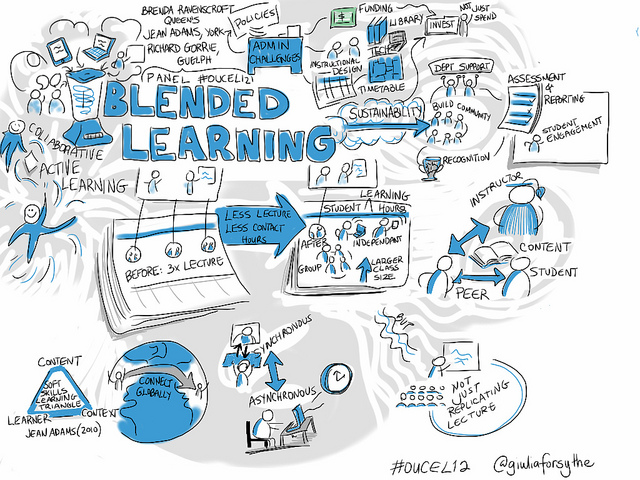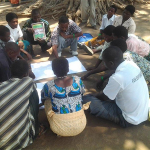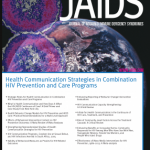What is Blended Learning?
The following observations were gleaned from HC3’s recent expert consultation on blended learning. Here is the full list of expert presenters, along with their presentations.
The combining of a variety of learning modalities and environments to meet a learning goal is not a new concept. With recent developments in technology and changing needs of learners and facilitators, the term “blended learning” has gained new ground and meaning. It is a broad term that combines and uses any number of components including: a computer device; internet connection; distance between facilitators and learners, and/or learners and other learners; synchronous and asynchronous activity; carefully selected content; and, live instruction or face-to-face facilitation.

Image credit: Giulia Forsythe, Flickr
As blended learning evolves, it is necessary to reflect on the terminology used. Does technology like Skype now offer an opportunity for “face-to-face” interaction? Is a “live” instructor only one who is physically present in the classroom or does technology allow for live instructor support at a distance? And what exactly does a classroom look like today?
Social and Behavior Change Communication (SBCC) organizations are complex and multi-dimensional systems. As a result, there are a number of organizational and environmental factors that may influence performance and contribute the success of an individual, organization or institution. If indeed, a lack of knowledge and skills are identified as contributors to low performance, a carefully constructed blended learning program may be a one solution.
Blending learning is not a random combination of different modalities, environments, and inter-actions; rather it is a strategic approach to learning. The first step in applying a blended learning approach for capacity strengthening is to determine if the gap is indeed a learning gap. Starting with a thorough needs assessment that identifies the gaps within an organization, and recognizing and exploring the context in which a learner lives and operates will help to establish a strong foundation for the design and development of an effective blended learning program that meets a specific learning objective or goal.
In designing and developing a blended learning program, the learner is king or queen. He or she is the center of the design and selecting the right learning architecture or framework and building the program floor by floor takes time. The design goes beyond just the learner to the include supervisors, managers and others who may be involved in the learning process.
Learning is behavior change, and like behavior change it is a process, not an event, carefully crafted to meet the needs of a learner. One learning methodology or modality does not fit all. Design, develop and test quickly. Once pre-tested and revised, be prepared to make changes throughout the life cycle of the learning intervention.
Ultimately, learning for SBCC is about change on the job – an entire learning-to-performance process.
As SBCC professionals, we know that change does not happen in isolation but within a complex system. The same is with learning, whether it be a new knowledge, increased skills, or the ability or opportunity to practice these new learnings. Successful learning happens when there is focus, alignment and intentionality with the organization; high quality learning interventions; and support for performance improvement post intervention.








Leave a Reply
Want to join the discussion?Feel free to contribute!